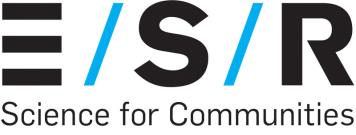 STRATEGIC SCIENCE INVESTMENT FUNDING (SSIF)-
FINAL PROJECT REPORT FOR FY2018
ESR is fully accountable for Strategic Science Investment Funding (SSIF).
STRATEGIC SCIENCE INVESTMENT FUNDING (SSIF)-
FINAL PROJECT REPORT FOR FY2018
ESR is fully accountable for Strategic Science Investment Funding (SSIF).
Information in this report will be used to demonstrate the value of ESR SSIF and to quantify the benefit
from the investment. It will also inform future investment of SSIF.
Your Final Report is also used to populate the Board Science Report for FY2018/19. Please remember
if you don’t inform the Research Office we can’t inform MBIE or the Board, and your work will not
have the impact it deserves.
Please complete and email, in Word Doc form, to
[Withheld under section 9(2)(a) of the
OIA]@esr.cri.nz by Friday 12th July 2019.
Project Title: Centre for Integrated Biowaste Research (CIBR)
Project Leaders: Maria J. Gutierrez Gines (CIBR) & Louise Weaver (CIBR – Pathogen removal in
wastewater)
Duration: 2 of 3
Completion of Milestones
Please provide:
#Of Milestones in the project [ 29 ]
#Of Milestones COMPLETED [ 14 ]
#Of Milestones ON TRACK [ 9 ]
#Of Milestones BEHIND
[ 5 ]
 Our goal for SSIF investments for FY2018 was to increase ESR capabilities and impact across our four
Our goal for SSIF investments for FY2018 was to increase ESR capabilities and impact across our four
key areas (forensics, food, health and water). Please provide details on HOW your SSIF project
contributed to:
1. Developing our capability in areas of national importance
- The social team furthers our collaborative exploration of new models of indigenous knowledge
building/science education/community engagement for sustainable change, allowing the
knowledge of the team to be more widely known.
- Successful bid to investigate the impacts of microplastics in NZ by Olga Pantos (ESR) and Grant
Northcott (Northcott Research Ltd).
- Antimicrobial resistance (AMR) in wastewater and looking at improved treatment options to
reduce the impact of AMR on the environment, using whole metagenome analysis. This led to
further applications for funding to develop methods for detecting AMR genes in wastewater, which
were successful - “AMR in Wastewater” –
[Withheld under section 9(2)(a) of the OIA], and Louise
Weaver. ESR-SSIF funding.
- Method for testing biosolids contaminants on key ecological species, especially transcriptomic
protocol for investigation of contaminants in biosolids against springtails.
- The development of a joint Australia-Aotearoa (New Zealand) framework to manage pollutants in
Australasia. This knowledge is being put together to assess and manage the risks associated with
the presence of chemical contamination in our environment is being run by the ecotoxicology and
social and cultural research team members.
- Developing deeper international collaborations with China, which could lead to new research
projects.
- Exploring research collaboration with Chile, about the reuse of biosolids into land, and Spain,
about
resource recovery from wastewater, restoration and conservation of degraded soils with biowaste,
and reuse of biowaste into agriculture.
- Establishment of five permanent field trials, as a scientific resource for the long-term investigation
of biowaste and NZ native vegetation.
- Supporting future scientists by PhD and Masters studies in collaboration between CIBR teams and
with external entities.
2. ESR’s impact for New Zealand
- Give effect to Vision Matauranga in work related with holistic views of environment and
sustainable behaviour, management of waste, collaborative governance of environmental issues.
- Provide science based support for reducing the disposal of biowaste, and finding optimal reuse
options for the best cultural, social, economic and environmental outcomes.
- Provide science and knowledge about risks of emerging contaminants, and antimicrobial resistance
in the NZ fragile environment and public health.
- Recovering NZ native ecosystems in degraded environments, such as mine areas, biowaste disposal
fields, and intensive agricultural areas.
- Increasing the visibility of NZ science and research into the international landscape.
 List the external research or grant proposals submitted (include $ value) and any research funding
List the external research or grant proposals submitted (include $ value) and any research funding
obtained that have been made possible as a result of SSIF investment in the project; include
proposals awaiting funding decisions:
1. “Impacts of microplastics on New Zealand’s bioheritage systems, environments and
ecoservices” Olga Pantos (ESR) and Grant Northcott (Northcott Research Consultants). MBIE
endeavour fund - $12,536,205 over five years.
Successful.
2.
[Withheld under section 9(2)(b)(ii) of the OIA] Unsuccessful. 3.
[Withheld under section 9(2)(b)(ii) of the OIA] Unsuccessful. 4.
[Withheld under section 9(2)(b)(ii) of the OIA] Submitted. 5. [Withheld under section 9(2)(b)(ii) of the OIA] Submitted, at stage 2.
6. [Withheld under section 9(2)(b)(ii) of the OIA] Unsuccessful.
7. [Withheld under section 9(2)(b)(ii) of the OIA] Unsuccessful.
8. “AMR in Wastewater” –
[Withheld under section 9(2)(a) of the OIA], and Louise Weaver. ESR-
SSIF $199,673.
Successful
List the 1) peer reviewed publications, 2) conference presentations (oral) 3) conference
presentations (poster), 3) external presentations other than conference developed from this SSIF
project:
Peer reviewed publications
1. Gutiérrez-Ginés MJ, Madejón E, Lehto NJ, McLenaghen RD,
Horswell J, Dickinson N,
Robinson
BH. 2019. Response of a Pioneering Species (
Leptospermum scoparium J.R.Forst. & G.Forst.)
to Heterogeneity in a Low-Fertility Soil. Frontiers in Plant Science. 10:93. doi:
10.3389/fpls.2019.00093
2.
Saleeb N,
Robinson B, Cavanagh J, Mofasser AKM, Gooneratne R 2019. Biochemical changes
in sunflower plant ex-posed to silver nanoparticles/silver ions. SDRP Journal of Food Science
& Technology 4(2): 629-644. DOI: 10.25177/JFST.4.2.RA.469
3.
S. Seyedalikhani, J. Esperschuetz, N.M. Dickinson, R. Hofmann, J. Breitmeyer,
J. Horswell, B.H.
Robinson. 2019. Biowastes to augment the essential oil production of
Leptospermum
scoparium and
Kunzea robusta in low-fertility soil. Plant Physiology and Biochemistry. Volume
137, 213-221
. https://doi.org/10.1016/j.plaphy.2019.02.008.
4.
Saleeb N, Gooneratne R,
Cavanagh JE, Bunt C, Mofasser-Hossain AKM, Gaw S,
Robinson BH
(2019). The mobility of silver nanoparticles and silver ions in the soil-plant system. Journal of
Environmental Quality. In press. doi: 10.2134/jeq2019.03.0098.
5.
Jensen H, Orth B, Reiser R, Buerge D, Lehto N, Almond P, Gaw S, Thomson T, Lilburne L,
Robinson BH (2019). Environmental parameters affecting the concentration of iodine in New
Zealand pasture. Journal of Environmental Quality. In press. doi: 10.2134/jeq2019.03.0128

6. Benyas E, Owens J,
Seyedalikhani S, Robinson BH (2018). Cadmium uptake by ryegrass and
ryegrass-clover mixtures under different liming rates. Journal of Environmental Quality 47(5),
1249-1257.
7.
Jensen H, Gaw S, Lehto NJ, Hassall L,
Robinson BH (2018). The mobility and plant uptake of
gallium and indium, two emerging contaminants associated with electronic waste and other
sources. Chemosphere 209, 675-684.
8.
Charry MP,
Northcott GL, Gaw S, Keesing V, Costello MJ,
Tremblay LA. 2019. Development of
acute and chronic bioassays using the pelagic copepod
Gladioferens pectinatus to assess
estuarine health.
Ecotoxicology and Environmental Safety. 174: 611–617.
9. Guyon A, Smith KF,
Charry MP, Champeau O,
Tremblay LA. Effects of chronic exposure to
benzophenone and diclofenac on DNA methylation levels and reproductive success in a
marine copepod. In press in Journal of Xenobiotics.
10.
Charry MP, Wells JBJ, Keesing V, Smith KF, Stringer TJ,
Tremblay LA. Quinquelaophonte
aurantius sp. nov., a new harpacticoid species (Copepoda: Harpacticoida: Laophontidae:
Quinquelaophonte) from New Zealand. New Zealand Journal of Zoology. DOI:
10.1080/03014223.2018.1548496
11.
Tremblay LA, Booth L,
Cavanagh JE, Champeau O, Northcott GL, Cedergreen N. The effects of
the mixtures of three micro-contaminants commonly found in biosolids on earthworm
reproduction. In press in The Australasian Bulletin of Ecotoxicology and Environmental
Chemistry.
12. Feng, C-Q, Cheng, D-M, Feng, Y, W-N, Jia, Z-H,
Weaver, L, Liu, Y-W, Li, Z-J. 2019. Screening and
degradation characteristics of a tylosin degrading bacterial strain. Journal of Integrative
Agriculture. In Press.
13. Feng, Y., Zhang, W.J., Liu, Y.W.,
Xue, J.M., Zhang, S.Q., Li, Z.J. 2018. A simple, sensitive, and
reliable method for the simultaneous determination of multiple antibiotics in vegetables
through SPE-HPLC-MS/MS. Molecules 23 (8), 1953.; doi:10.3390/molecules23081953
14. Cheng, D., Feng, Y., Liu, Y., Li, J.,
Xue, J.M., Li, Z. 2018. Quantitative models for predicting
adsorption of oxytetracycline, ciprofloxacin and sulfamerazine to swine manures with
contrasting properties.
Science of the Total Environment 634, 1148–1156.
15. Gallart, M.; Adair, K.L.; Love, J.; Meason, D.F.; Clinton, P.W.;
Xue, J.M.; Turnbull, M.H. 2018.
Genotypic variation in
Pinus radiata responses to nitrogen source are related to changes in
the
root
microbiome.
FEMS
Microbiology
Ecology,
94
(6),
fiy071,
https://doi.org/10.1093/femsec/fiy071
16. Liu, Y, Feng, Y, Cheng, D,
Xue, J.M., Wakelin, S A, Li, Z. 2018. Dynamics of bacterial composition
and the fate of antibiotic resistance genes and mobile genetic elements during the co-
composting with gentamicin fermentation residue and lovastatin fermentation residue.
Bioresource Technology 261, 249-256. August 2018

17. Zhang, C.,
Xue, J.M, Cheng, D., Feng, Y., Liu, Y., Aly, H. M., & Li, Z. 2019. Uptake, translocation
and distribution of three veterinary antibiotics in
Zea mays L.
Environmental Pollution.
https://doi.org/10.1016/j.envpol.2019.03.110
18. Weining Qi, Jian Long, Changqing Feng, Yao Feng, Dengmiao Chen, Yuanwang Liu,
Jianming
Xue, Zhaojun Li 2019 Fe3+ enhanced degradation of oxytetracycline in water by
Pseudomonas.
Water Research, https://doi.org/10.1016/j.watres.2019.05.058
19. Yang, L., He, L.,
Xue, J.M., Wu, L., Ma, Y., Li, H., Peng, P., Li, M., Zhang , Z. Highly efficient nickel
(II) removal by sewage sludge biochar supported α-Fe2O3 and α-FeOOH: Sorption
Characteristics and Mechanisms.
PLOS ONE (accepted).
20. Cheng, D., Feng, Y., Liu, Y.,
Xue, J.M., Li, Z. 2018. Dynamics of oxytetracycline, sulfamerazine,
and ciprofloxacin and related antibiotic resistance genes during swine manure composting.
Journal of Environmental Management. 29 Sep 2018. doi: 10.1016/j.jenvman.2018.09.074.
21. Angus Macfarlane, Richard Manning,
Jamie Ataria, Sonja Macfarlane, Melissa Derby, Te
Hurinui Clarke. (2019). Wetekia kia rere: the potential for place‑conscious education
approaches to reassure the indigenization of science education in New Zealand settings.
Cultural Studies of Science Education,
https://doi.org/10.1007/s11422-019-09923-0
22.
Richard T. Yao, E.R. (Lisa) Langer, Alan Leckie,
Louis A. Tremblay, Household preferences
when purchasing handwashing liquid soap: a choice experiment application. Journal of
Cleaner Production. Accepted: DOI: 10.1016/j.jclepro.2019.07.002
Conference presentations (oral)
1.
Clemens, H., Weaver, L., Morgan, L. Virus removal through on-site septic tank disposal fields.
Presented by Hazel Clemens at
Water NZ conference, Hamilton, September 19-21 2018.
2. Garnett, A.,
Villanueva S., Adding clarity to the murky world of greywater re-use and risk to
human health. Co-presented by Amber Garnett (BRANZ) and Sein at
Water NZ conference,
Hamilton September 19-21st 2018.
3.
Louis Tremblay, Rick Van Dam,
Jacqui Horswell. 2018. Considerations for water quality
guidelines for emerging contaminants. A talk presented at the
50th NZ Freshwater Science
Society Conference, 10-14 December, Nelson.
4.
Xue, J.M. and Kimberley, M. 2018 Long-term application of biosolids enhanced soil fertility
and carbon sequestration of radiata pine plantation on a marginal land. In the proceedings of
the
4th International Congress on Planted Forests in Beijing, China on 23-26 Oct 2018.
5.
Xue, J.M.; Kimberley, M.; Wang, M.H.;
Gielen, G.; Tremblay, L.A.; Champeau, O.; C. Ross, C.;
Horswell, J. 2018 Beneficial use of biosolids to forestland: What are the environmental
impacts? In the proceedings of the
New Zealand Soil Science Conference in Napier, on 3-6 Dec.
2018.
6.
Xue, J.M.; Kimberley, M. 2018. Repeated application of biosolids improved soil fertility, tree
growth and carbon sequestration of radiata pine plantation on a marginal land. In the
proceedings of the
New Zealand Soil Science Conference in Napier, on 3-6 Dec. 2018
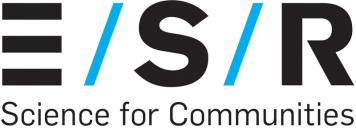
7.
Gutierrez-Gines MJ,
Simcock R,
Xue J,
Horswell J, Langer L, Madejón E, McLenaghen RD, Letho
N, Dickinson N,
Robinson BH. 2019. Biosolids for rehabilitation of NZ degraded land. Oral
presentation.
Biosolids National Conference 2019. Biosolids in the Circular Economy. 21-22
February 2019, Brisbane, Australia
8.
M.J. Gutierrez-Gines, C. Sitz
, S. Halford, I. Alderton, J. Horswell, S. Cass
, B. Robinson, G.
Northcott, H. Lowe. 2019. Where is my phosphorous? – 30 years of treated effluent land
application. Oral presentation in
New Zealand Land Treatment Collective Conference. Invercargill 3-5 April 2019
9. Maria J Gutierrez Gines, S. Halford, A. Meister, I. Alderton, V. Ambrose
, S. Villanueva, J.
Prosser
, B. Robinson, J. Horswell. 2019. Mānuka Is Not Alone In Its Antimicrobial Potential.
Oral presentation in
New Zealand Land Treatment Collective Conference. Invercargill 3-5 April
2019.
10.
Grant Northcott, Louis Tremblay, Jacqui Horswell –AMR the New Zealand Perspective.
What’s In Our Water Symposium, Society of Environmental Toxicology and Chemistry (SETAC), 29-31st October, 2018 in Canberra, Australia.
11.
Grant Northcott, Louis Tremblay, Fred Leusch-Identification of priority emerging organic
contaminants in wastewater”
What’s In Our Water Symposium, Society of Environmental
Toxicology and Chemistry (SETAC), 29-31st October, 2018 in Canberra, Australia.
12.
Grant Northcott, Louis Tremblay, Jamie Ataria, Jacqui Horswell, Virginia Baker, Mike
Stewart, Fred Leusch, Graham Sevicke-Jones -Research program to manage emerging organic
contaminants in NZ”
What’s In Our Water Symposium, Society of Environmental Toxicology
and Chemistry (SETAC), 29-31st October, 2018 in Canberra, Australia.
13.
Virginia Baker, Jamie Ataria, Jacqui Horswell, E.R. (Lisa) Langer, Alan Leckie, Joanna Goven,
Rangimarie Parata-Takurua,
Louis Tremblay – What’s in our water, and what can we do about
it? Science at the interface of policy, community and sustainable change.
What’s In Our Water
Symposium, Society of Environmental Toxicology and Chemistry (SETAC), 29-31st October,
2018 in Canberra, Australia.
14.
Virginia Baker,
Jamie Ataria, Jacqui Horswell, E.R. (Lisa) Langer, Alan Leckie, Joanna Goven,
Rangimarie Parata-Takurua,
Louis Tremblay (2018) Re-configuring relationships and practice
for sustainable change.
4S Society for Social Studies of Science conference: Transdisciplinary
theme, 29 Aug – 1 Sept. Sydney 2018.
15.
V.E. Baker, J. Ataria, J. Horswell, E.R. Langer, A. Leckie (2018) Schools and community
engagement in science: Expanding a sustainable focus.
New Zealand Association for
Environmental Education Conference, 18-20 April 2018, Wellington.
16.
Gutierrez-Gines MJ, Clarke D,
Baker V, Alderton I, Simcock R, Tupuhi G,
Robinson BH, Taylor
M, Efford J, Nikau T, Biddle TR, Moana T,
Horswell J. 2019. Water Quality, Ecosystem
Restoration and Traditional Knowledge. Oral Presentation.
Conference on Land Use and Water
Quality. Agriculture and Environment. 3 – 6 June 2019. Aarhus, Denmark. Volume of Abstracts,
pp 24-25.
17. Hernández AJ, Ceballos RM, Tena E, Frías M,
Gutiérrez-Ginés MJ. 2019. Policies for the good
treatment between people, between the two genders, and with the environment in island

territories.
26th APDR Congress. Evidence-based territorial policymaking. 4 – 5 July 2019,
University of Aveiro, Portugal.
18.
Jianming Xue 2019. Microplastics in soil-plant system and their ecological and environmental
impacts. An invited plenary talk presented at the
2nd National Conference on Environmental
Pollution and Control of Microplastics. Nanjing, China 4-6 June, 2019.
19.
Alan Leckie, Lisa Langer, 2018. Impacts of a natural disaster on a growing town’s projected
waste planning – biosolids and wastewater system. Oral presentation by Alan Leckie at the
IUFRO Extension and Knowledge Exchange Working Party 09.01.03 Conference, Christchurch,
N.Z. 9-14 September 2018
20.
Brett Robinson (2019) Keynote speaker at the
International Conference on Environmental
Science and Resource Management, Tangail, Bangladesh, 8 February.
21.
Louis Tremblay, Olivier Champeau, Grant Northcott, Kevin Simon. 2019. Assessing the risk of
microplastics in New Zealand. An invited keynote talk presented at the 2nd Conference on
National Environmental Pollution and control of microplastic. Nanjing, China 4-6 June.
22.
Louis Tremblay. 2019. Managing pollutants in New Zealand. An invited talk presented at the
Institute of Agricultural Resources and Regional Planning Center of Soils and Fertilizers
Research, Chinese Academy of Agricultural Sciences, Beijing, China, 9 June.
Conference presentations (poster)
1. Villanueva, Prosser,
Gutierrez-Gines, Tinholt,
Lowe, Horswell. 2019. Biosolids as growth
medium for plants in nurseries. Poster in
New Zealand Land Treatment Collective Conference.
Invercargill 3-5 April 2019.
2. Villanueva, Prosser,
Gutierrez-Gines, Tinholt,
Lowe, Horswell. 2019. Biosolids as growth
medium for plants in nurseries. Poster in Biosolids National Conference 2019. Biosolids in the
Circular Economy. 21-22 February 2019, Brisbane, Australia
External Presentations
1.
Virginia Baker, Mat Walton,
Jamie Ataria, Jacqui Horswell, E.R. (Lisa) Langer, Alan Leckie,
Joanna Goven, Louis Tremblay. (2018) Getting beyond behaviour change: Combined systems
thinking and social science approaches for complex environmental problems. Invited
workshop, hosted by BRANZ at the Royal Society NZ, 6 August 2018, Wellington.
2.
V. E Baker, J. Ataria, L. Tremblay, G. Northcott, G. Sevicke-Jones, O. Pantos. Managing the
risk of Emerging Organic Contaminants (EOCs) in Aotearoa New Zealand’s marine ecosystems
– Transdisciplinary science approaches for complex environmental problems. Special session
workshop: NZ Marine Sciences Society Conference, 3-5 July 2018, Napier.
3.
Jianming Xue 2019. Beneficial use of biosolids to forestland: What are the environmental and
ecological impacts? An invited presentation at the Institute of Soil Science, Chinese Academy
of Sciences in Nanjing, China on 4 June 2019.
4.
Jianming Xue 2019. Ecosystem responses to long-term application of biosolids to a pine forest
in New Zealand. An invited a keynote speaker for the Forest Ecosystem Workshop at Beijing
Forestry University on 11-14 June 2019.
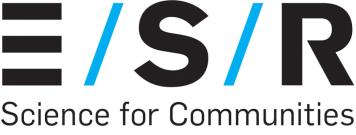
5.
Gutierrez-Gines MJ. 2019. Research of Organic Waste in NZ. Seminar at CIEMAT, Spain. 20th
may 2019.
6.
Gutierrez-Gines MJ. 2019. CIBR, 10 years of biowaste research in NZ. Seminar at EIADES,
Spain. 17th May 2019.
7.
Gutierrez-Gines MJ. 2019. The Centre for Integrated Biowaste Research in NZ. Seminar at
IRNAS, CSIC, Spain. 22nd may 2019.
8.
Gutierrez Gines, MJ. 2019. Plant-Soil interactions and remediation of degraded land. Lecture
for university students in EcoQuest Education Foundation, Kaiaua, 4th march 2019.
9.
Robinson BH. 2019 Trace element fluxes in the soil-plant system. Lecture at North Western
Agriculture and Forestry University, Yangling, China. 26th June, 2019.
Executive summary – Three to four sentences giving an overview of your project and the results
obtained. This will be used for the Board Report so keep in mind that not everyone is an expert in
your field.
The Centre of Integrated Biowaste Research (CIBR) is a virtual research centre with transdisciplinary
expertise, led by ESR, and composed of Maanaki-Whenua/Landcare Research, Scion, Cawthron
Institute, University of Canterbury, Northcott Research Consultants, Kukupa Research, Massey
University, NIWA, and Lowe Environmental Impact. The goal of CIBR is to investigate unique and
holistic solutions for the sustainable management of biowastes (organic waste), by delivering value-
added science that improves human well-being and protects the environment.
In the past year (July 2018 - June 2019), CIBR has demonstrated its success by:
- delivering internationally recognized research, by publishing
22 papers in international peer
reviewed scientific journals, giving
24 presentations in national and international conferences, and
being invited to give 8 presentations, publications and outreach activities, published two newsletters,
and refreshed the content in the webpage.
-
attracting $12,736,000 in research funds for increasing our capability on microplastics research and
developing methods for detecting AMR genes in wastewater.
- keeping working collaborations with
18 regional and district councils, and
six iwi groups.
- having
13 successful students: four master students and seven PhD students, and two interns, and
other
13 ongoing students.
- investigated
Māori worldviews of kaitiakitanga/guardianship, and values of whānau (family),
whakapapa (genealogy), and tikanga (tradition) in designing opportunities to reuse and minimise
biowastes.
- stablishing
five permanent field trials which will be an important scientific resource for the team for
investigating long-term effects of biowaste and restoration of NZ native species.
- being acknowledged for our expertise by participating in the
revision of the national guidelines for
the land application of organic waste.
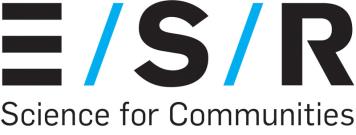
- extending our capabilities by increasing longstanding collaborations with research institutes in
China,
Australia, UK, Spain, Chile, and Bangladesh.
Project report –Include brief background, what you did, what you found, conclusions (max 2 pages).
This is the opportunity to tell a success story that ESR can use in Impact Case Studies, Briefing and
other communications
The CIBR group has continued to develop the necessary work for investigating unique and holistic
solutions for the sustainable management of biowastes (organic waste), which improves human well-
being and protects the environment. In particular, CIBR’s work has been focused on three main
streams: i) deliver cutting-edge science regarding the beneficial reuse of biowaste, ii) to inform
environmental and public health decision making in New Zealand, iii) increase our capabilities and
grow our science by increasing our international and national collaborations, and attracting new
research, and bringing new students.
Delivering valuable science
The group has continued its successful research with further developments in these areas , particularly
developing methods for analysing emerging contaminants and their ecotoxicity, investigating
beneficial reuse of biosolids, greywater, the long-term Rabbit Island Field trial, mānuka and native
plants for reducing the impacts of biowaste land application, and a robust social and cultural program.
These projects span multiple research streams within CIBR (Soil Science, Microbiology, Ecotoxicology,
Social and Cultural). Several research projects are emerging that have strong future potential with
significant collaborative opportunities and high likelihood of bringing in more revenue for the group.
We have successfully collected and transcribed information regarding
Māori worldviews of
sustainability and kaitiakitanga, and how to translate those values into day to day sustainability and
education practices. The school Te Pā in Ōtautahi (Christchurch) has become a living example of
holistic sustainable behaviour. We are developing
ecotoxicity tests to evaluate the potential
environmental risks of emerging organic contaminants in NZ native species, using cutting edge
transcriptomic techniques. Rabbit Island’s experiment is still producing exciting results about
the long
term benefits and potential risks of biowaste application into forestry, regarding organic
contaminants, trace elements, and carbon sequestration in soil and biomass.
NZ native vegetation is
gaining great attention due to their potential antimicrobial properties, economic revenue, and for
restoration of NZ’s fragile biodiversity using biowaste. Regarding this, we have conducted three
greenhouse experiments, and one field experiment, with one lysimeter experiment and one field
experiment still ongoing. We have now five field trials established around the country evaluating the
role of NZ vegetation for treating biowaste and farm run-off: Waikare, Wairarapa, Levin, Duvauchelle,
and Stockton Mine. We are running laboratory experiments to investigate the
enzyme activity in
wastewater to reduce emerging organic contaminants. We are also starting to investigate the
presence of
AMR in wastewater and potential reduction by enzymes.
We have communicated the results in
22 peer-reviewed papers - and two more are planned for
journal submission -
24 conference proceedings in national and international conferences and
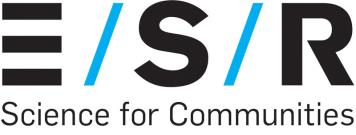
workshops, and have been invited to give lectures and science talks. We shared our knowledge with
general public and stakeholders via two CIBR newsletters and the CIBR webpage. We have appeared
in the media in numerous occasions. We are working closely with
18 regional and district councils,
and six iwi groups.
Increase our capabilities and grow our science
The CIBR team realises the importance of growing our research and capabilities to be able to deal with
imminent challenges in NZ. We have been growing our capabilities in
Vision Matauranga by exploring
and understanding new models of indigenous knowledge for sustainable change, allowing the
knowledge of the team to be more widely known. We are developing new
transcriptomic methods
for assessing ecological impacts of contaminants in NZ native species, methods for
sampling and
analysing groundwater samples for residual contaminants, and genomic methods for detecting
Antimicrobial resistance (AMR) in wastewater.
We have submitted four research applications – MBIE programs, Smart Ideas, Marsden, SSIF – which
will grow our research with extra
$12,700,000, for growing our capabilities and science in
microplastics and detection of
antimicrobial resistance genes in wastewater.
We are extending our capabilities by increasing longstanding collaborations with research institutes
in
China, Australia, UK, Spain, Chile, and Bangladesh and new Māori organisations.
We are strongly
investing in future scientists by supporting PhD, master and intern students, who
have been working and enhancing collaboration between CIBR teams and external institutions:
Successful students:
1.
[Withheld under section 9(2)(a) of the OIA] 2.
[Withheld under section 9(2)(a) of the OIA] 3.
[Withheld under section 9(2)(a) of the OIA] 4.
[Withheld under section 9(2)(a) of the OIA] 5.
[Withheld under section 9(2)(a) of the OIA] 6.
[Withheld under section 9(2)(a) of the OIA] 7.
[Withheld under section 9(2)(a) of the OIA] 8.
[Withheld under section 9(2)(a) of the OIA] 9.
[Withheld under section 9(2)(a) of the OIA] 10.
[Withheld under section 9(2)(a) of the OIA] 11.
[Withheld under section 9(2)(a) of the OIA] 12.
[Withheld under section 9(2)(a) of the OIA] 13.
[Withheld under section 9(2)(a) of the OIA]
Current students
1.
[Withheld under section 9(2)(a) of the OIA] 2.
[Withheld under section 9(2)(a) of the OIA] 3.
[Withheld under section 9(2)(a) of the OIA] 4.
[Withheld under section 9(2)(a) of the OIA]
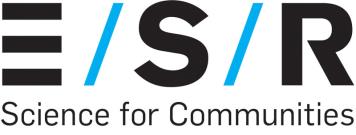
5.
[Withheld under section 9(2)(a) of the OIA] 6.
[Withheld under section 9(2)(a) of the OIA] 7.
[Withheld under section 9(2)(a) of the OIA] 8.
[Withheld under section 9(2)(a) of the OIA] 9.
[Withheld under section 9(2)(a) of the OIA] 10.
[Withheld under section 9(2)(a) of the OIA] 11.
[Withheld under section 9(2)(a) of the OIA] 12.
[Withheld under section 9(2)(a) of the OIA] 13.
[Withheld under section 9(2)(a) of the OIA]










